Engine & railroad facilities.
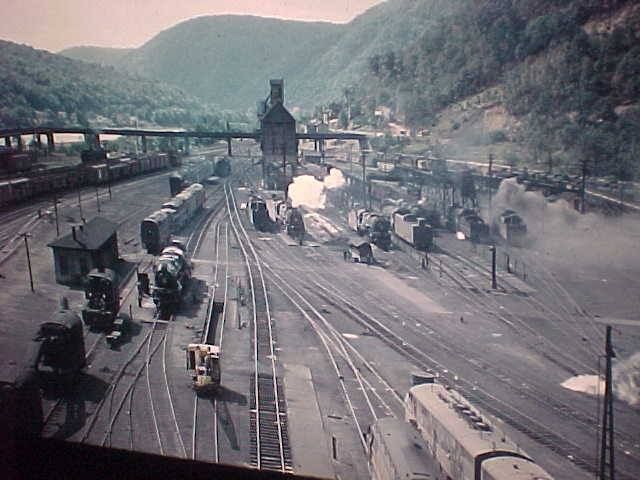
There was no caption with this pic, but I believe we’re looking at an engine facility around the early ‘50’s. I see a lot of doghouses on the tenders of the steamers. There appears to be an F unit with a radio antenna paired with another unit, and maybe an E unit in the lower right corner. There’s a pit to the left – maybe an ash pit. There appears to be a water spout mid right. And that’s a coaling tower off in the distance before the overpass. I can’t see anything that provides the owning RR, but with the eastern looking mountains along the river in the background, the doghouses on the tenders, and the radio antenna on the F unit, my first guess would be a PRR facility. Also, on a further look, the steamers appear to have Belpaire fireboxes – a dead giveaway that it’s PRR.
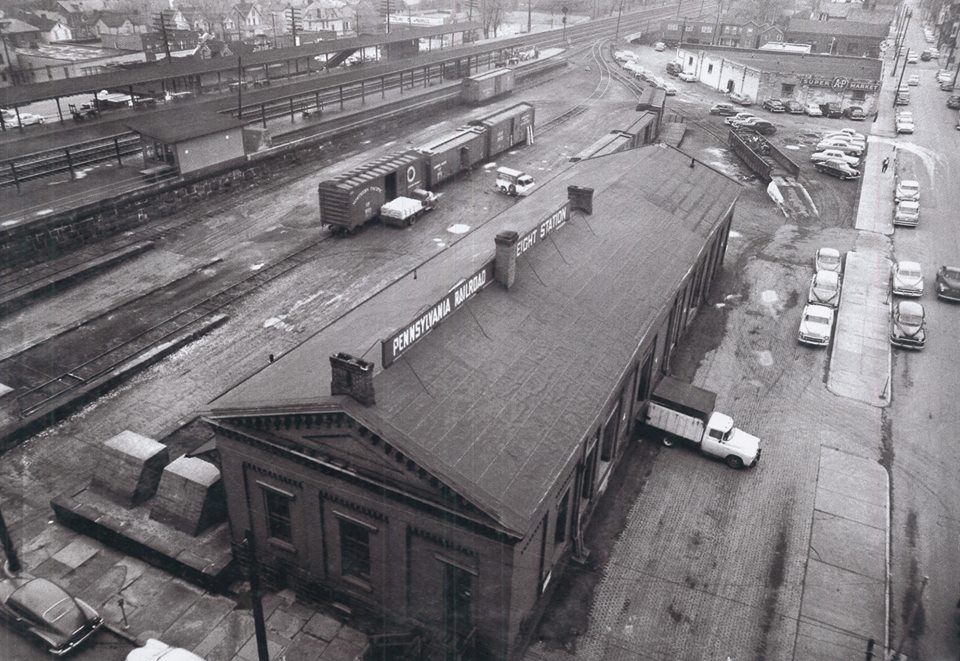
The caption says this is the PRR in Latrobe PA, 1950s. I had to look up Latrobe – It’s part of the Pittsburg metro area, roughly 30 miles east and a touch south of the center of Pittsburg. A small version of the pic led me to believe that the wedge shaped building might have been a roundhouse with the “bridge” being a small turntable (not aligned very well). But as I blew the pic up, the wedge building is a “Super A&P Market”. The “bridge” is actually a drop-end gondola backed up to a ramp/dock. It looks like they’re gradually loading trash or scrap metals into the gondola. The PRR freight station in the foreground is a masterpiece of era structures. There’s an obvious addition to the freight house on the far side. Check out the car bumpers to the left of the freight house! The passenger platforms on the tracks to the far left are pretty long – must have a bit of commuter traffic. The platforms sandwich what appears to be the mainline which is either two or three track. The mainline tracks appear to have a third rail reinforcing a possible commuter line – never checked to see if the PRR ran electric lines all the way to Pittsburg. There’s a large stonewall maintaining the level on this side of the platforms, and the opposite side appears to drop even further. Finally, there’s a nice team track between the freight station and the passenger platforms. The trucks by the open boxcars help make the scene.
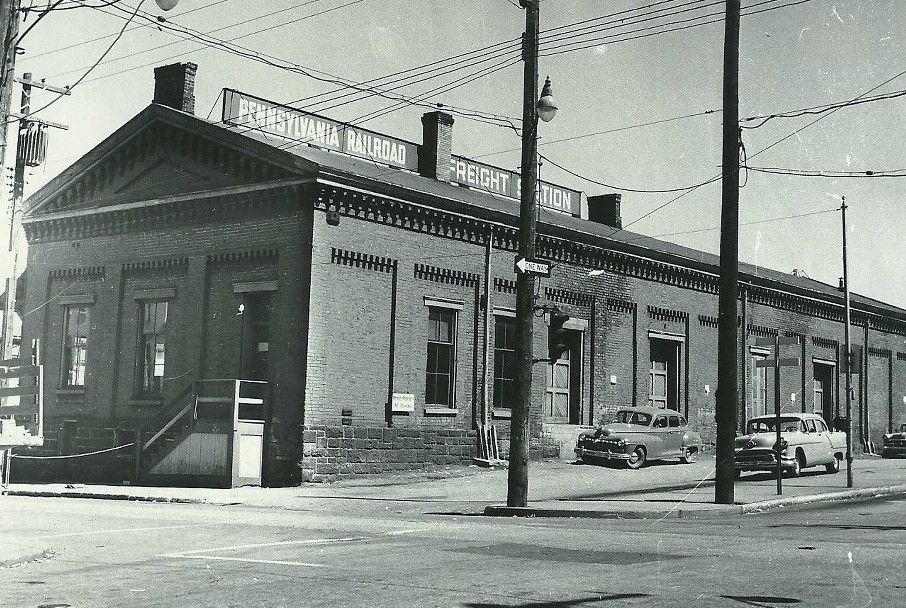
Here’s another shot of the freight station – what great early century architecture! Check out the stone foundation. The addition is almost imperceptible at street level.
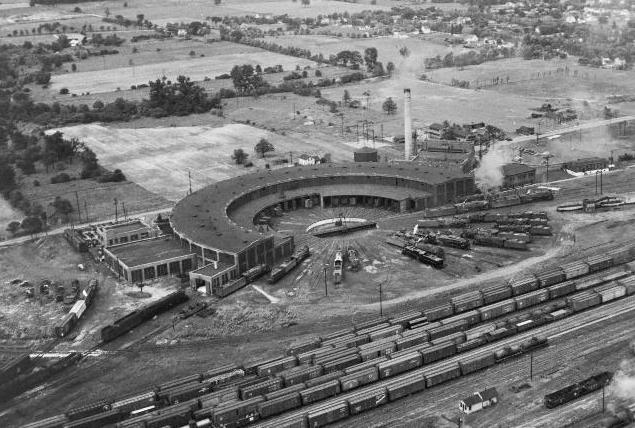
I found a great website about the PRR facilities in Crestline, OH: http://www.crestlineprr.com/ . Check out the 1947 edition of the roundhouse. The roundhouse wasn’t demolished until 2006.

Here’s an overall view of the facilities. The roundhouse is on the left with the yard on the right. You can’t make out much of the service tracks other than it branches off back at the yard ladder in the background. From the tracks in the foreground, it looks like locos had access to the roundhouse from either side of the roundhouse / yard.
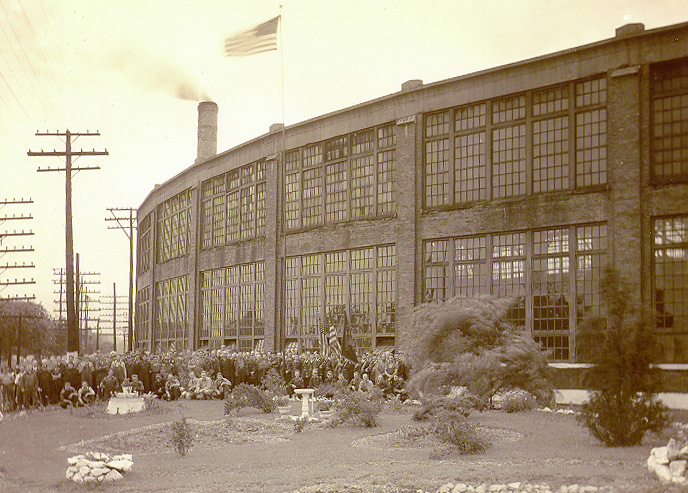
This WWII era photo shows a garden on the backside of the roundhouse. It’s believed that the congregation is the beginning or end of a Fourth of July parade.
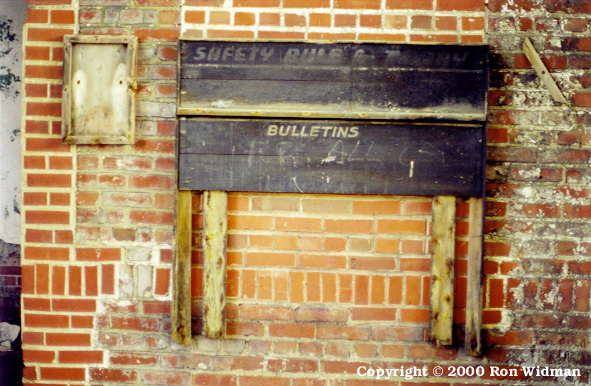
This is a feature I’ve not seen modeled – This is the bulletin board just inside the roundhouse at the service building entrance. With safety being a priority “Safety Rules for Today” is the top board where rules were posted. The “Bulletins” board displayed work orders and general info.
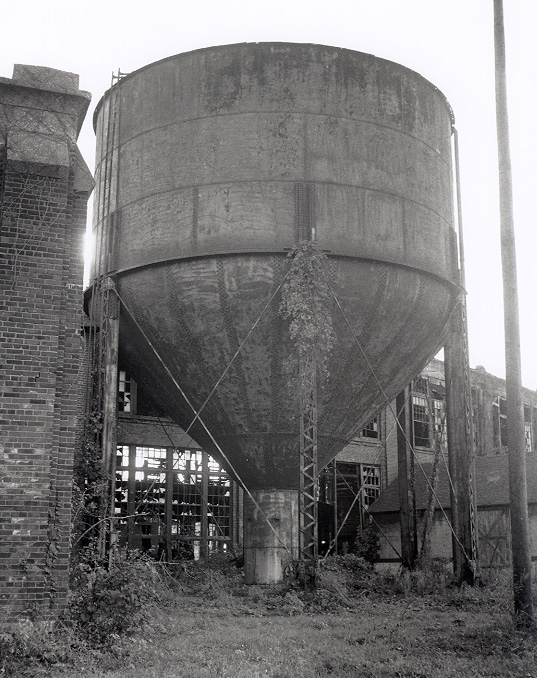
This is also a relatively modern photo (1987) of the water tank that supported the powerhouse boiler. The fan house is on the left edge of the photo.
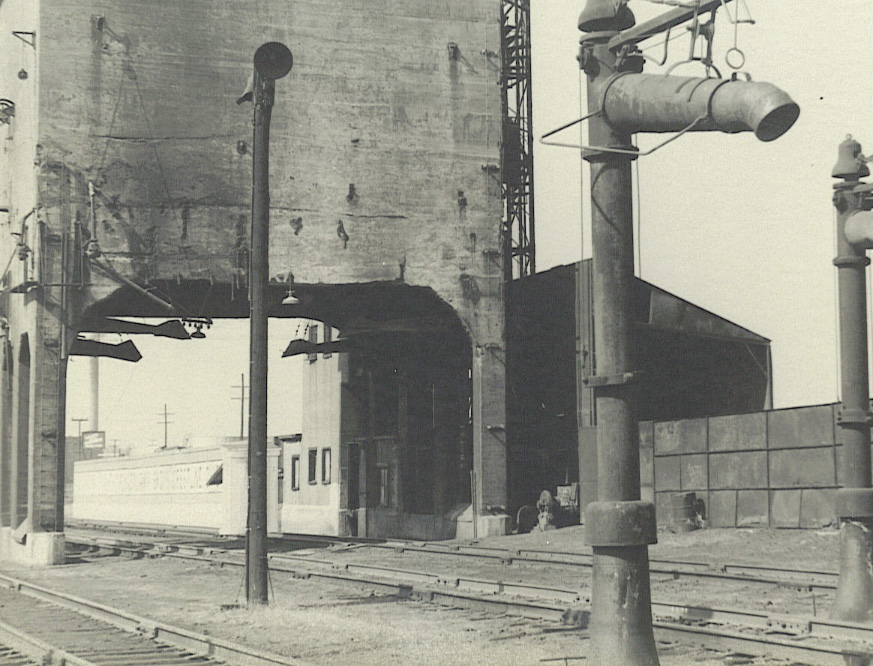
The concrete coaling tower could service 3 locos at a time, two under and one to the left. To the right and behind the tower is where the hopper cars dumped the coal. Next to it at the right of the pic is the sand pit. And, of course, a couple water spouts cover the foreground.
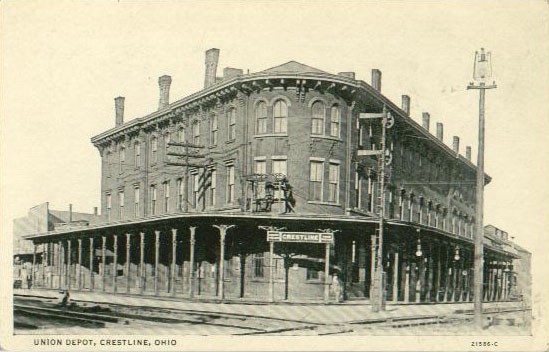
Here’s the early union passenger station at Crestline that serviced the area since 1863. In this period, the PRR was the Pittsburg, Ft Wayne & Chicago RR and the crossing road was the Big Four (Cleveland, Cincinnati, Chicago & St. Louis RR).
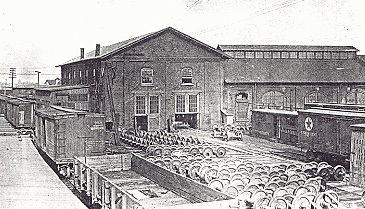
The facility had a car shop near the Big Four crossing. This is a 1917 photo of the shop built in 1893.
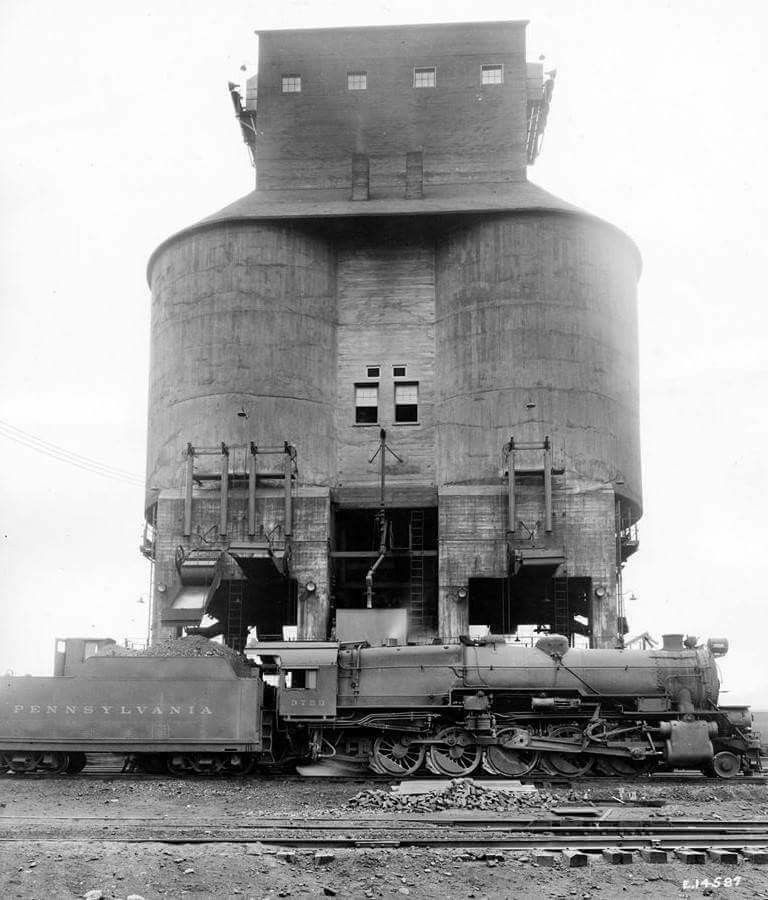
Here’s a great PRR concrete coaling tower. I didn’t find its location, but I’m sure someone knows where it was at! Check out the terrain around the tracks by the tower – great insight into how to scenic/ballast such a facility. Also, a great look at a PRR Decapod – can’t make out the number.
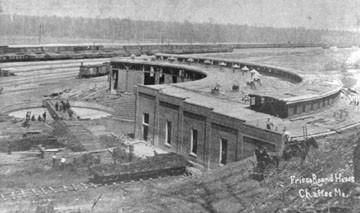
Moving away from the PRR, this is a Frisco roundhouse, Chaffee, MO. The photo was taken from a hillside just to the side of the facility.
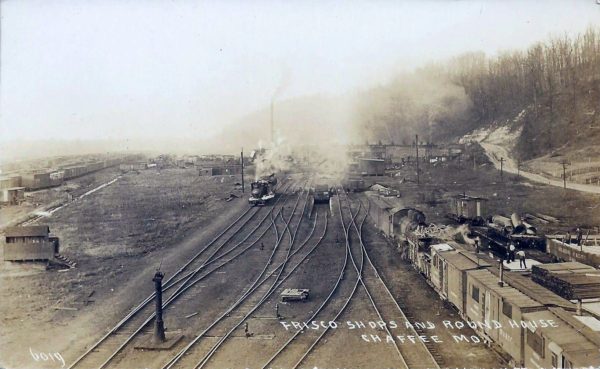
In this “corrected” pic, the roundhouse is to the right in the background. The road on the right goes up and past the roundhouse – probably where the first photo was taken.
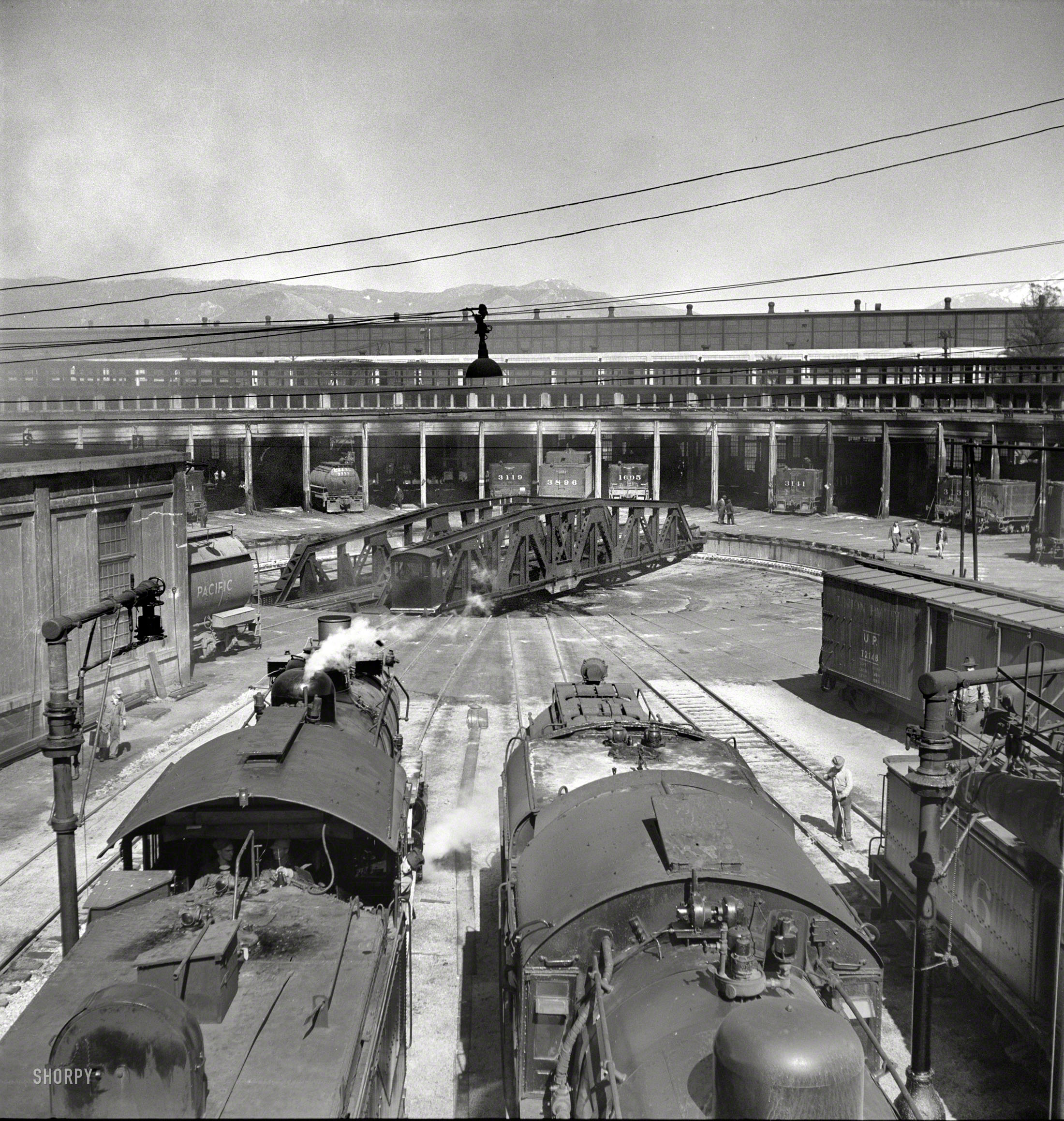
Jack Delano, another of my favorite RR photographers, took this photo of the San Bernadino Santa Fe roundhouse for the war department in 1943. All the tenders visible enough to tell have oil tanks. It looks like there are a couple of water spouts next to the locos in the foreground. I count around 10 workers in different roles in the scene.
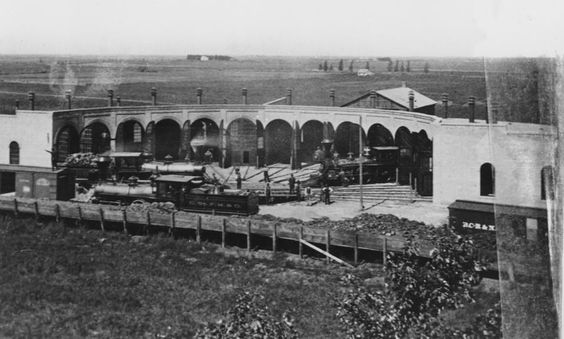
This final pic is of the Chicago, St. Paul, Minneapolis and Omaha RR (I believe) at St. James Minnesota. If my sources tell me correctly, I believe this became part of the Chicago North Western. I don’t have a date, but the loco’s all appear to Americans, so I’d guess mid to late 19th century. The roundhouse appears to be brick. There are short leads to turntable that was built just long enough for these Americans. So this facility probably was rebuilt or replaced by the early 20th century. The stall doors have a great arched look along with the windows on the side. Interestingly, the foreground platform appears to be loaded with stacked fuel wood. This was probably the woodburning version of a fueling platform.
This is a topic with no end to pics that can be found. And each railroad (railroad historic society) has it’s own photos of different facilities it ran. Next to steam locos, this is one of my favorite topics!
Thx,
Kevin
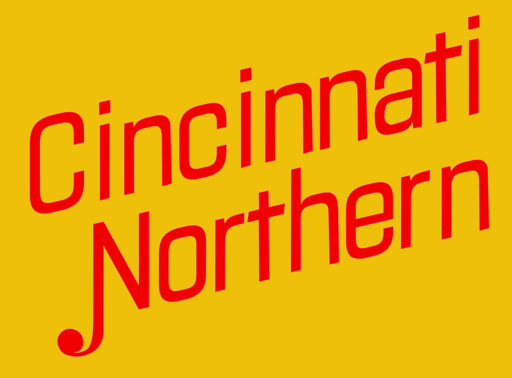
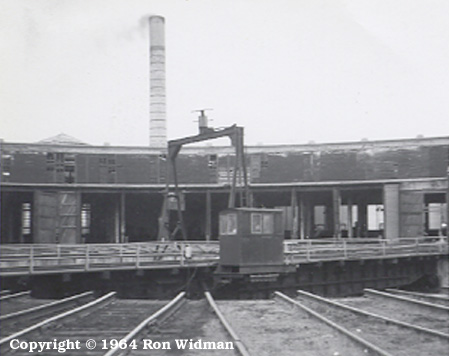
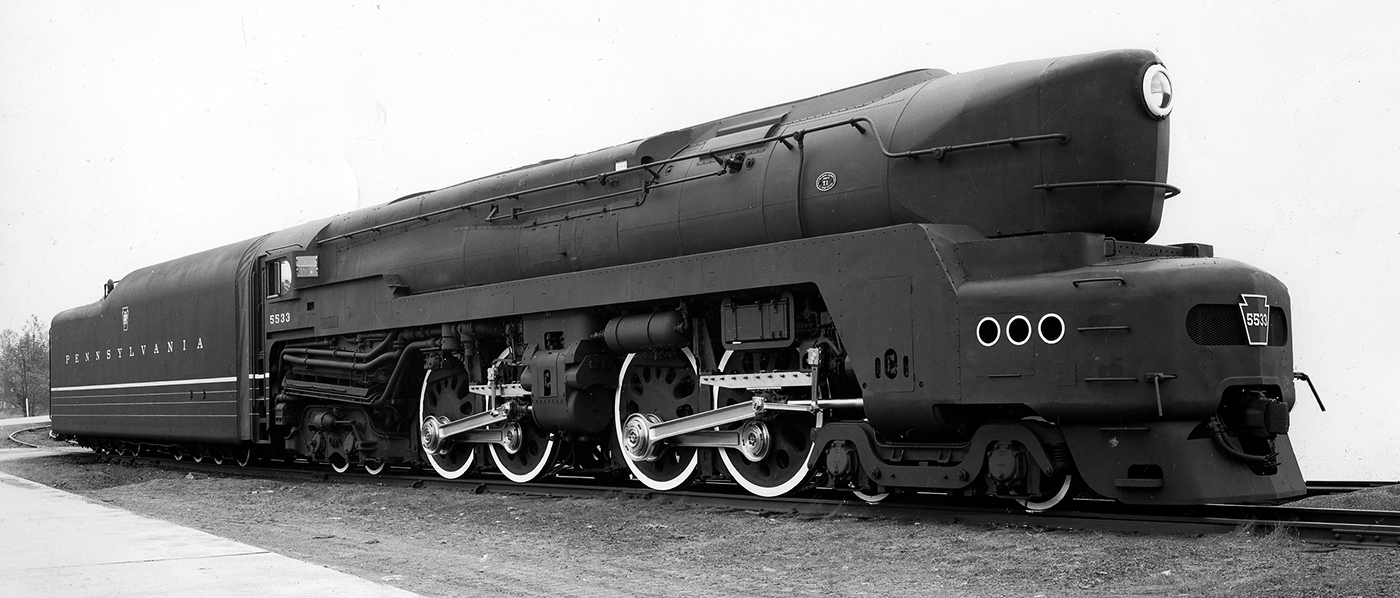
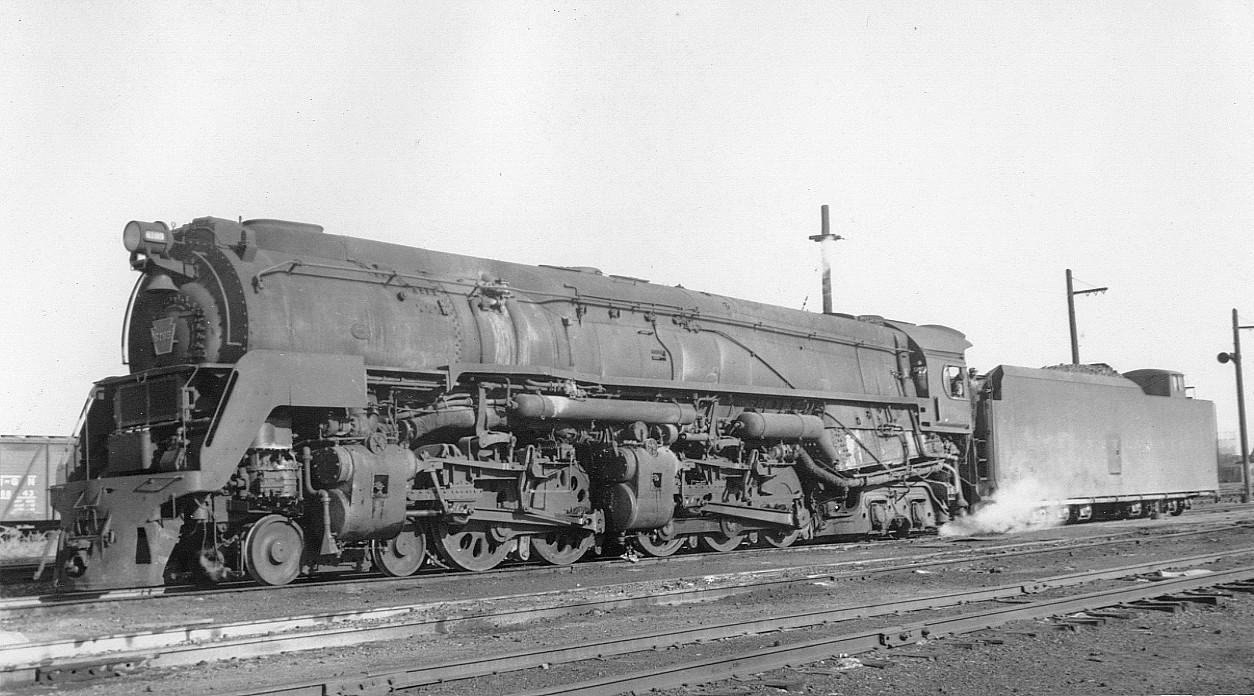
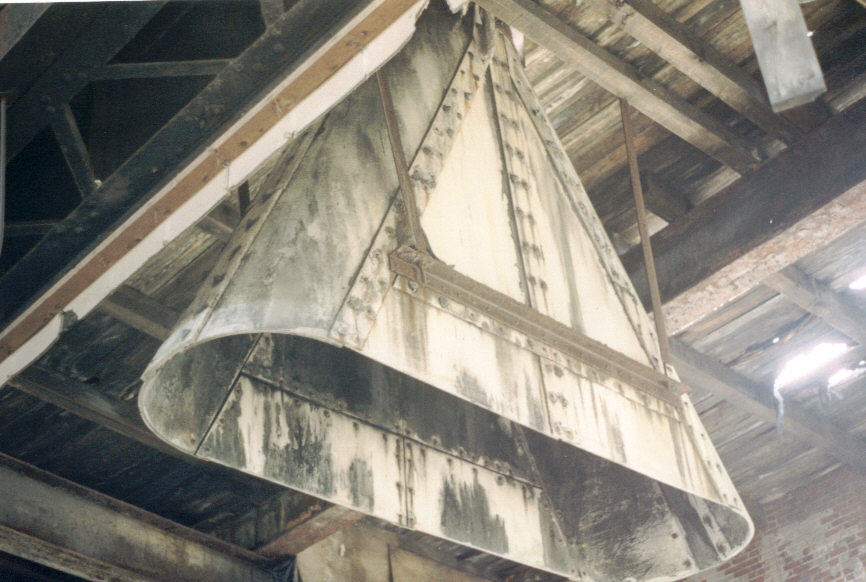
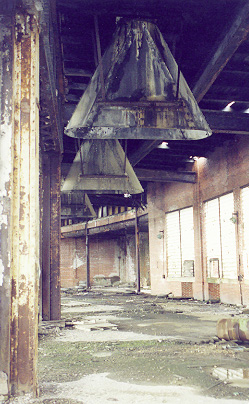
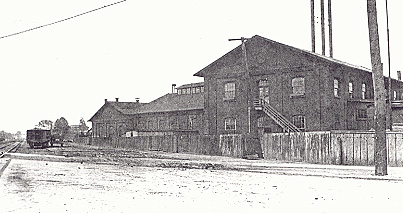
Comments